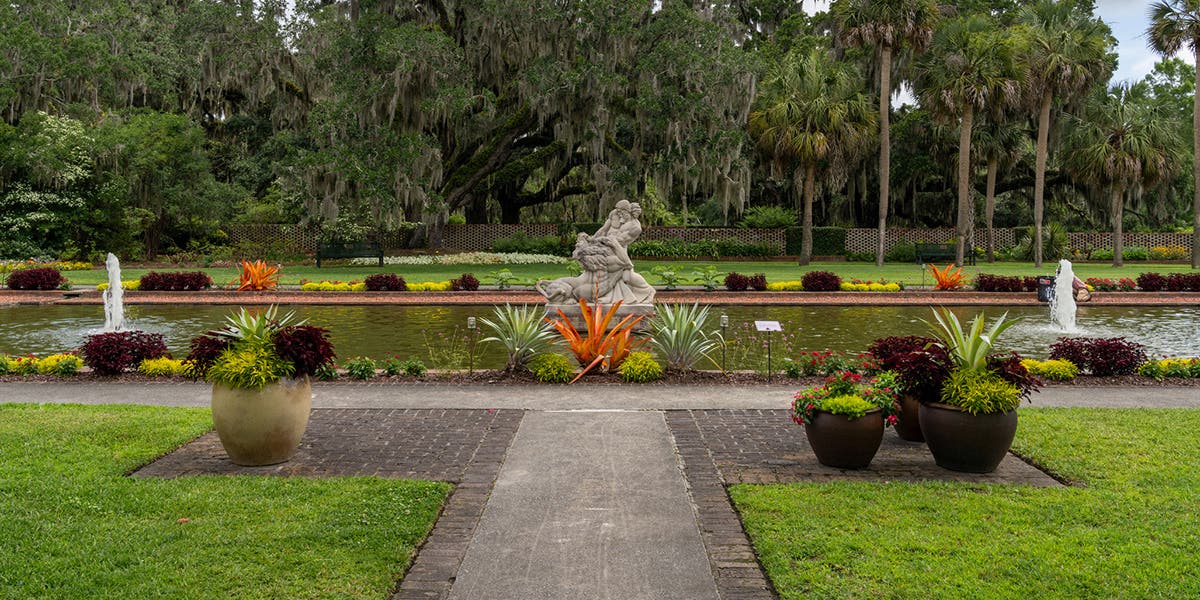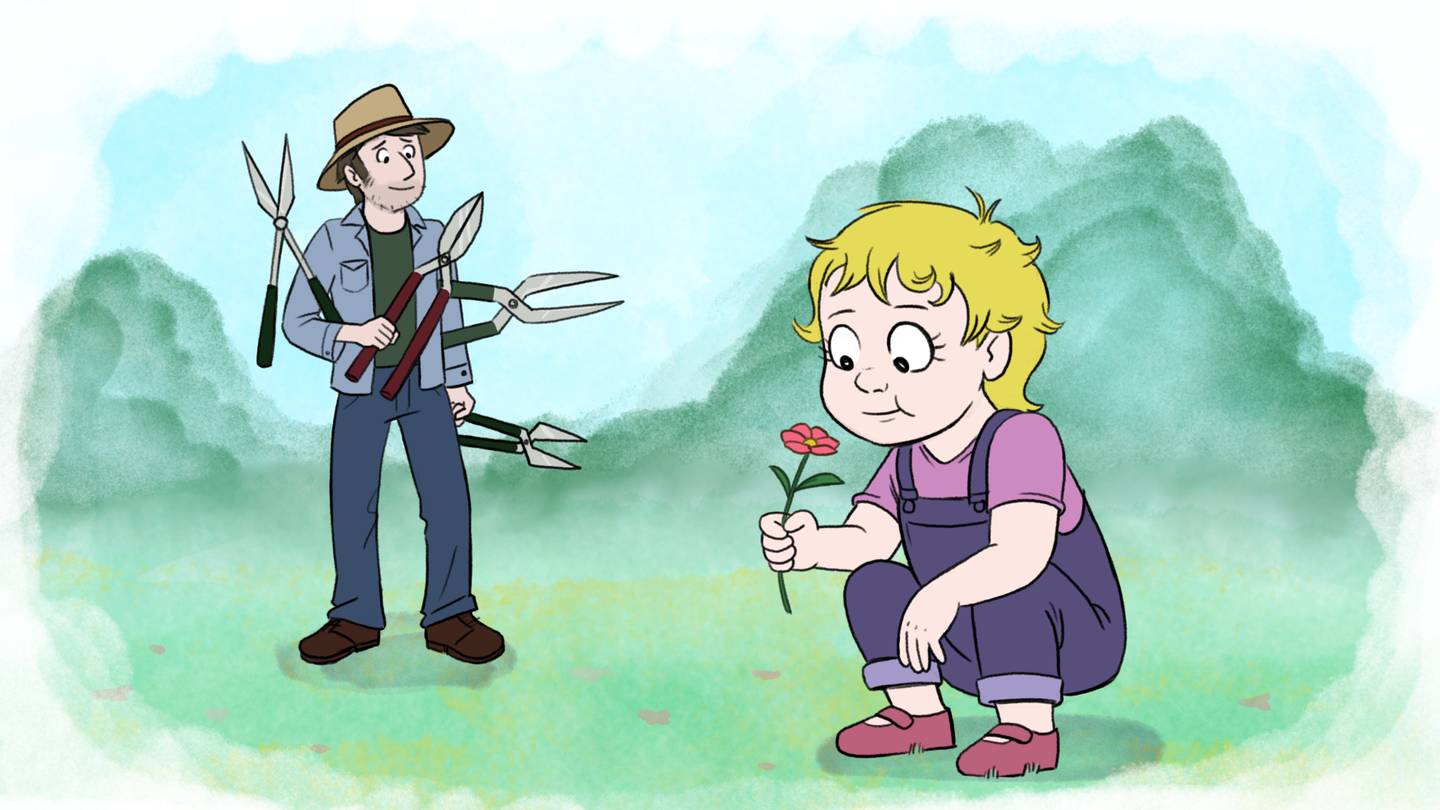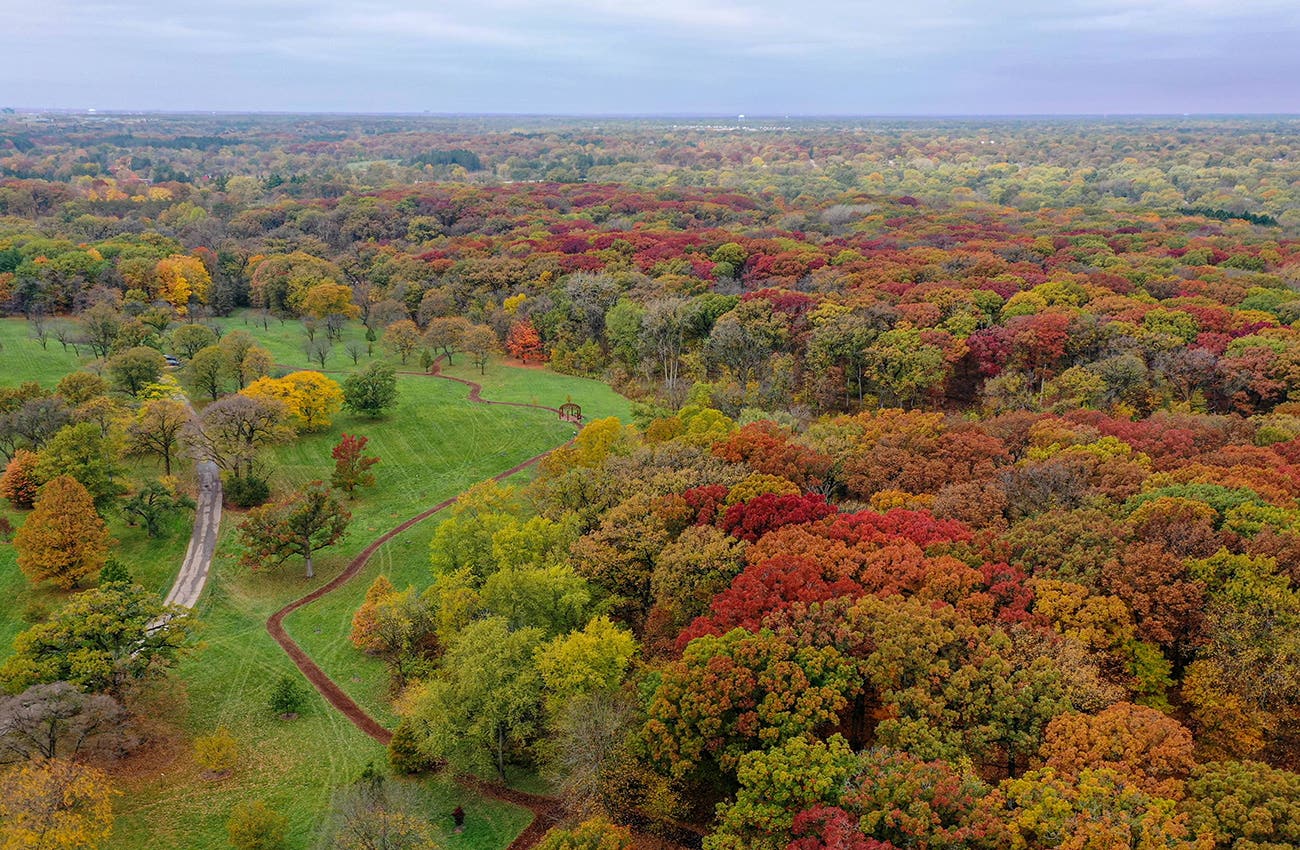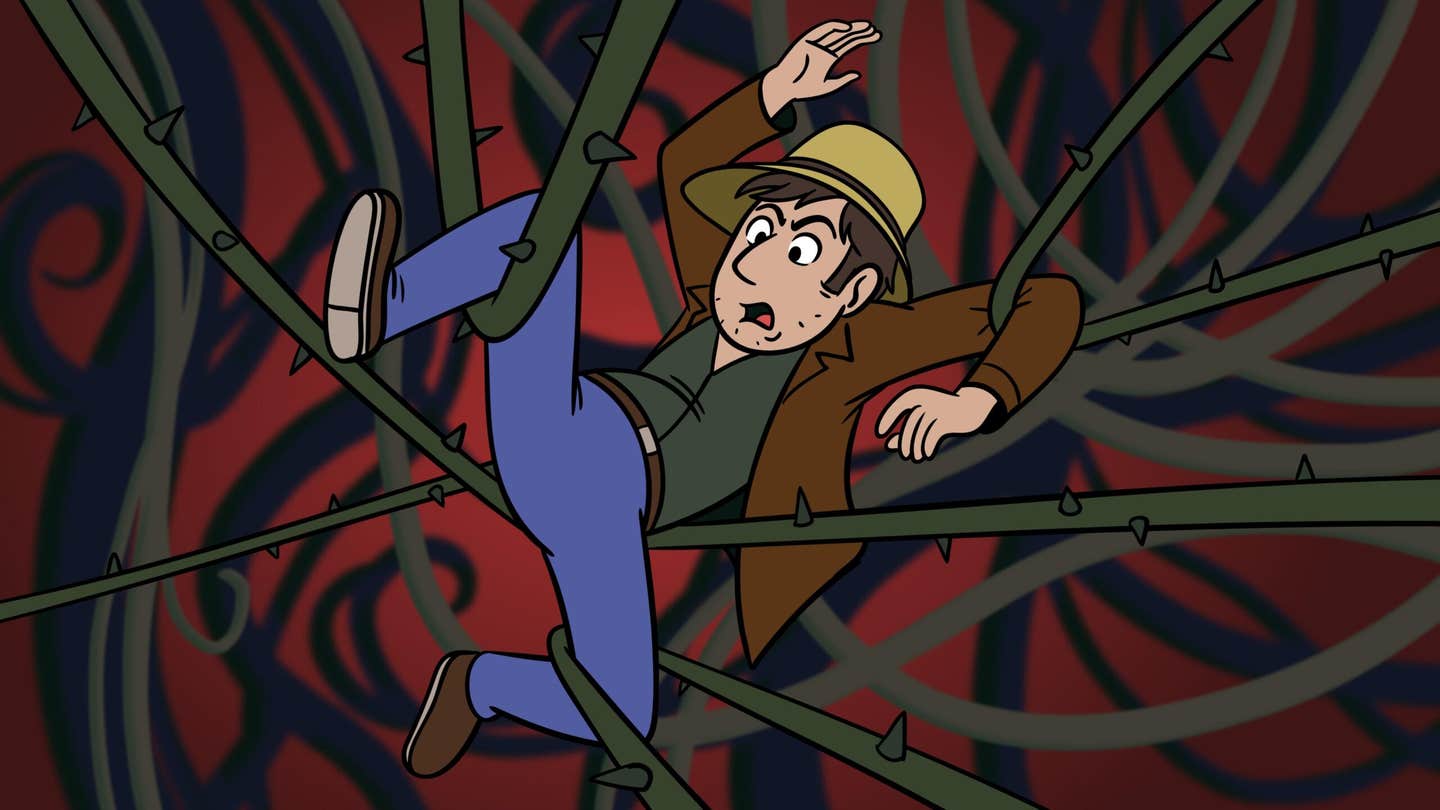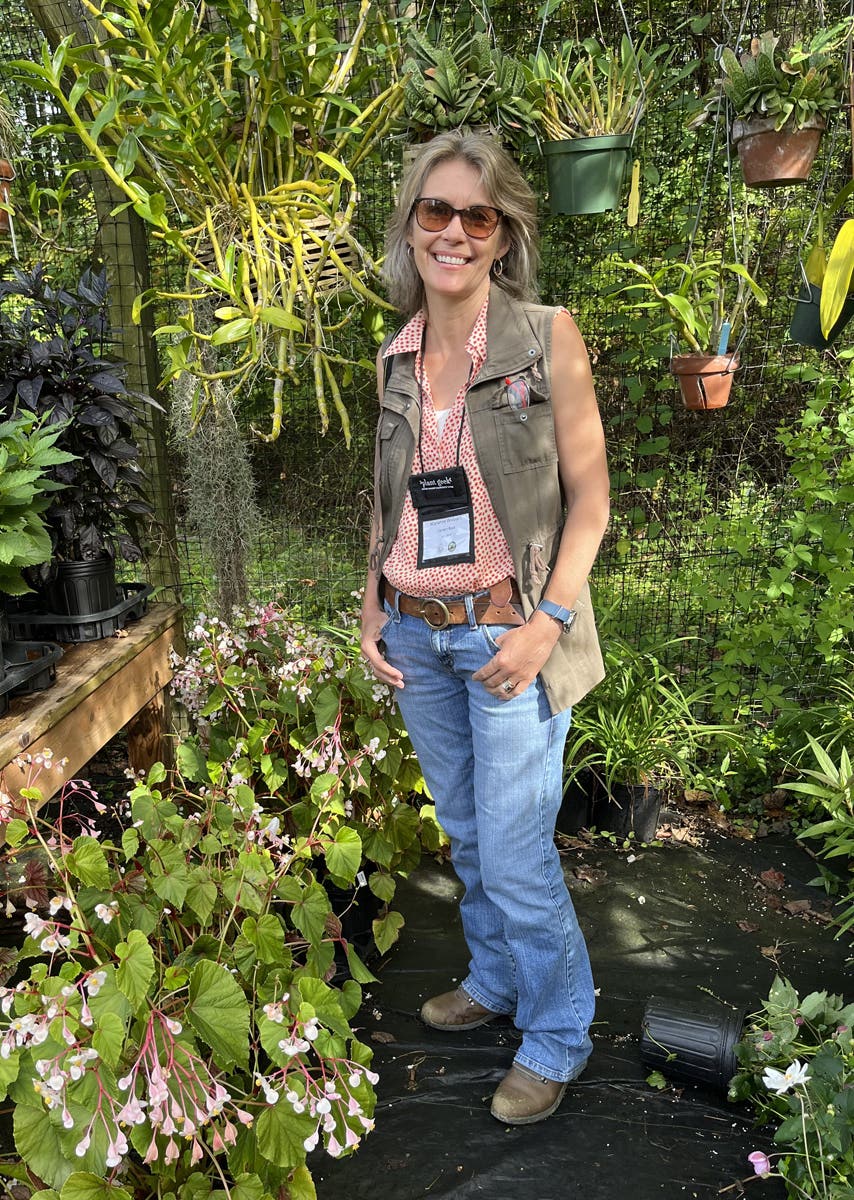A Conversation with Fergus Garrett, Head Gardener at Great Dixter
Insight on a storied garden’s past, present and future
Since 1993, Fergus Garrett has been the Head Gardener at Great Dixter in England, first working alongside his mentor and the renowned garden’s creator, Christopher Lloyd, and assuming the additional role of Chief Executive after Lloyd’s passing in 2006. In the autumn of 2024, he spoke with Scott Beuerlein about his background, the history of Great Dixter, and Great Dixter’s role in contemporary horticulture.
Meet Fergus Garrett
Scott Beuerlein (SB): Please tell us how your career in horticulture developed.
Fergus Garrett (FG): I was interested in geography and chemistry at school and my geography teacher said I should go to university to perhaps study agriculture, because I was interested in what was happening in West Africa with agriculture. I don’t know why. But he saw a connection there and said I should get into Wye College, which is part of London University and was the best place to go.
So I went there to study agriculture, but it didn’t make sense to pursue agriculture at that point in the UK and Europe, where there were butter mountains and milk lakes and subsidies and there was nothing about the holistic way of farming. I wanted to swap courses and take a rural environmental course, but my first-year subjects didn’t match up. They said I could take a horticulture course. I didn’t even know what “horticulture” meant at that point. But I thought, I’ll do it and see what happens, and I had a fantastic tutor called Dr. Tom Wright and I fell in love with the subject. The rest is history.
SB: How did you get started, then, at Great Dixter?
FG: Well, Christopher Lloyd also attended Wye, in the 1950s. I went there in the 1980s. So, we both had a connection to the place. Also, he taught there for a while and had actually taught Tom Wright. As a matter of course, Tom took students to Great Dixter every year to show them this very unusual garden, and I was one of those students. And as students go, I had red hair and suppose looked interesting and so Christo (Christopher Lloyd’s nickname) struck up a conversation with me and it went from there. Many years after I graduated and I worked in various places, including in the south of France and Switzerland and bits and pieces in the UK, he offered me the job of Head Gardener in 1992.
Christopher Lloyd and Great Dixter
SB: What can you tell us about Christopher Lloyd?
FG: He was born at Great Dixter in 1921 and lived there most of his life. He moved off to study modern languages at Cambridge, but that was interrupted by the war. After his military service he didn’t return to Cambridge. Instead, he followed his long-time interest in gardening, which he had from an early age—his mother was a great gardener—and so he went to Wye College and studied horticulture. He then joined the teaching staff there and went back to Dixter in the 1950s to set up Great Dixter Nurseries and to use that garden as a notebook to write from.
He became this ferocious writer, a wonderful, prolific writer, and it was all about experimenting and being inquisitive. He was very observant. Obviously, he had a beautiful command of the English language. All of that made him this perfect correspondent who wrote for a magazine called Country Life for over 40 years, never missing a weekly article. He was also a terrific letter writer.
And he was a born teacher and always had lots of students and young people around him and he became this sort of enigmatic character. He was an eccentric. And brilliant in so many ways. He could be difficult to people he thought were wasting his time, but he dedicated himself to people he thought were trying to learn. He was so kind and generous to so many people, helping them take the next step on their journey through horticulture. But he didn’t see eye to eye with everybody and he was quite outspoken as well. Very old-fashioned in some ways but very forward thinking in others.
SB: Can you describe Great Dixter?
FG: It’s a wonderful 15th-Century manor house with a 16th-Century wing and a 20th-Century wing, so it’s made up of three compartments. It was a renovation/restoration by the well-known architect, Edwin Lutyens, who was a great leader in the Arts and Crafts movement. Lutyens designed the garden as well, which was compartmentalized into a series of rooms and the divisions of those rooms are made up of brick walls and hedges and so on.
Nathaniel Lloyd, Christo’s father, added quite a bit to the design of the house and the garden—in fact the famous Sunk Garden with its octagonal pond is Nathaniel’s work and not Lutyens’.
Inside each of the garden rooms it’s gardened in a very informal way. It’s very colorful and dynamic. It’s got meadows that flow right into the garden. It’s very wild. Very biodiverse. It’s pioneering. It doesn’t follow any fads or fashions. It’s unusual. It’s old-fashioned. It’s all of those things. For some people it’s claustrophobic because vegetation dominates. For other people it’s very intimate. It’s an interesting place. It’s what the Brits would call a Marmite place, where some people like it and other people don’t.
Great Dixter today
SB: What took place, then, when Christopher Lloyd passed away?
FG: He had set up the Dixter Charitable Trust before he died in 2006. The Chairman of our Trust is Geoffrey Dyer, who is a lawyer, so those two had already set up the trust. But there wasn’t an endowment and Christo didn’t own all of Dixter. Part of it was owned by his niece, so the Trust wanted to buy the niece out. So, we fundraised, scrimped and saved, but it was very difficult because of the recession. So, we got help from the National Lottery, the Heritage Lottery Fund to do the necessary repairs and also the acquisition of Dixter, which they were really generous with, and, with the Trustees, Dixter carries on in the same way it always did. It’s there for education, inspiration, for biodiversity, for preserving that heritage and for cultural reasons.
SB: How was it for you to inherit the garden from Christopher Lloyd, the person who had mentored you and was so loved and respected by gardeners from all over the world?
FG: It was difficult, because we had essentially lost a parent. Christo was like a father to me. A father, a grandfather, a best friend. So that was hard, losing a person who had played such an important role in my life. But as he grew older, he gave me more and more responsibility running the place in terms of stepping into that chief executive role, so I was doing that anyway under him. But I never ever forgot that it was his place, so I always checked things with him.
I had similar relationships with people in the Trust, and Geoffrey Dyer is also like a father figure to me. And so, in essence, the Trustees and management run it together and the team is quite a cohesive unit. Doesn’t mean we don’t have hiccups along the way. Of course we do. Every family, every place does. But we have a strong vision for what Dixter should be. And it’s very unusual and it bucks the trends. It is an unusual place.
SB: How large is your staff?
FG: If you count the vegetable gardeners, we’ve got seven or eight gardeners. And then we’ve got a nursery that employs several people. And then we’ve got people that look after the shop, the catering, the lodging, administration staff, fundraising, so it’s quite a big staff. And a lot of part-timers, volunteers, scholars, apprentices, so it’s quite a vibrant place.
Ecological insights from Great Dixter
SB: A thing I found fascinating in one of your talks is that a wildlife survey found that Great Dixter ranks amongst the richest places in Britain in terms of wildlife diversity.
FG: It’s extraordinary, really. It’s surprising to us, and to the ecologists, that something so touched by the hand of humans is so rich in wildlife. And it is because it is such a dynamic place.
There are a whole range of habitats there, from wet, dry, sunny, shady, to ponds and sand banks and so on, so there’s that. And then there’s the woodland edge, and the long grass and short grass, but also there is a whole range of practices, from us digging or not, tidying up and not, letting some deadwood stand, and blah, blah, blah, all that stuff, so there’s a diverse range of practices happening as we garden.
As well as that, we haven’t used herbicides or pesticides for a great many years, so that helps. As well as that, there is a broad range of habitats. The building is old and has lots of nooks and crannies where things can nest, there are dry stone walls, and compost piles and so on and so on and, of course, there is also the surrounding countryside. The garden is much, much richer than the surrounding countryside but, still, it helps. All of it works together.
SB: That bodes really well for the future of gardening, as it means people can literally do meaningful conservation in their own backyards.
FG: Everybody’s gardens add up to make this very complex mosaic, and that’s what we need. And it doesn’t mean that everybody has to have a wildflower area. You can have short grass. I can have long grass. Somebody else can have a sandy garden. All of it adds up.
SB: One of my favorite points to make is that a diversity of gardeners, by default, means a stronger, richer and more diverse ecosystem. It was interesting that the ecologist who came to do the survey arrived with a lot of skepticism and left impressed.
FG: I saw him two days ago and it has changed his life. He now loves gardens!
Outreach, education and experimentation
SB: You do a lot of things beyond your work at Dixter.
FG: Yeah, Dixter is not inward thinking. We’re outward thinking. We could just make cash through opening the garden and that’s it, but we are involved in many different projects and different things, and it keeps the place busy and earning its keep. The place is very much alive because of it. And we do masses and masses of community projects. The problem with that is the more you do, the more people ask you to do, so it carries on like that. But it just feels good to be a giving place.
SB: What does Great Dixter mean to English gardening and to the world?
FG: It’s several things. Number one, it’s a good example of how a historic place that had an iconic person could live on into the future after that iconic person is no longer there.
It’s also an amazing example of how biodiversity in an intensive flower garden can work.
But most importantly, I think it’s known always as a free-thinking, pioneering, dynamic place that is experimental and full of pizzazz and creativity and then it shares that with everyone who touches it.
SB: What are you experimenting with right now?
FG: Different ways of cutting meadows. Different places to grow plants. Different seed-sowing dates, different seed-sowing regimes. Different combinations. Everything!
I mean, there’s stability in the way we garden, but actually a big part of that stability is that we’re curious and curiosity leads it. It can lead to failures, obviously. But it also leads to extraordinary surprises. I’m privileged to be in an environment where we can be curious, and we can garden like that. You think about garden maintenance, and we think there’s no garden maintenance at Dixter. It’s just about playing all the time and that keeps you young and interested.
SB: How do you share all that you learn?
FG: Through lectures, articles, through this sort of thing. We do study days, symposiums at Great Dixter. I think the symposiums are where people really get into the spirt of the place, because they’re there for a whole, very intensive week. So immersive experiences like that are really important. And we have forums where we meet with other gardens and so on.
SB: Can you describe the symposiums?
FG: They’re weeklong, usually four a year. One is just on integrating bulbs and mixed border gardening, usually in November. Another one is on pruning in February. And the other two discuss the way we garden, how we put combinations together and how we extend the seasons, as well as meadows and the way we garden to maximize biodiversity, et cetera.
So they are very full-on weeks where people are with me and the team for eight or nine hours of the day and we discuss everything in detail. There are lots of practical sessions. They stay in a local hotel, we ferry them back and forth, we feed them, they work alongside the team and it’s a real drop into that Dixter world. They meet everybody there. They meet inspirational people around us, as well.
SB: What are your hopes and dreams for Great Dixter?
FG: I want Dixter to carry on as an inspirational place, where it continues its curiosity and creativity, its giving, its support of the community, locally, regionally, nationally and internationally, all that stuff. But it can’t just be a creative place. That wouldn’t be good enough for me. It has to be a creative and giving place and forward thinking all the time.
SB: And what do you think horticulture can mean to the world?
FG: I think horticulture can get a little divided sometimes—this is the right way of doing something and that is the wrong way. All of that, which can be so tiring.
First of all, I think gardening should be artistic, where people always have freedom of expression.
Gardening should be a lot greener and more sustainable than it is. Absolutely, I think there’s a long way to go before we can say we are truly a green industry. The whole industry has to get its thinking caps on and ask how can we cut down on plastics, completely cut out peat use, how can we make things more sustainable. There is so much to do.
And then, as well as that, there’s too much of this low-maintenance, low-maintenance, low-maintenance speak, especially in public-run gardens. Wouldn’t it be great if we said we’re going to employ lots of gardeners, create jobs and create beautiful places? We’re going to support the green industry in our public spaces. We’re going to pay them well. And we’re going to make sure they’re educated the right way, so they respect the microcosm of life that’s around them and make our public spaces more beautiful and more biodiverse. And we’re going to make sure they train the next generation.
I think that is really important. That we value our industry. Not only in private places. Not only in places that have got the money to pay for it, but in our public spaces, so that it can give everyone shade, great places to meet, places to eat and increase the well-being of the community.
SB: I agree. More and better horticulture in every aspect of our lives provides all these almost subconscious benefits that just aren’t realized.
FG: They aren’t. No.
SB: What are the achievements you’re most proud of?
FG: Training all those wonderful students who are the next generation and then the next generation. And they’ll be better than me and they’ll be better than the sort of heroes of the past. Like Christo did with me, I’ll have that imprint on the next generation, so this industry carries on in the right way. There are some really brilliant people who have come through Dixter, and I couldn’t be prouder than sharing the platform with those kind of kids.
Images courtesy of Great Dixter


